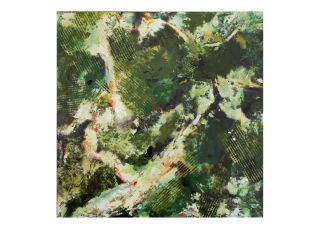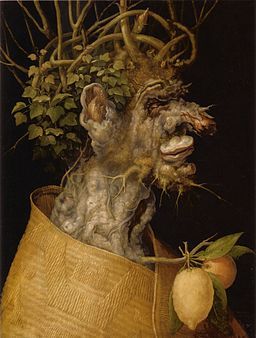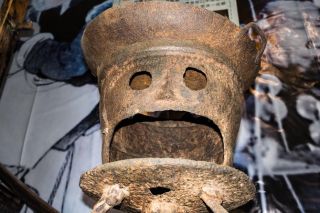Pareidolia
On the Face of It: Pareidolia
We see faces in inanimate objects everywhere.
Updated June 12, 2023 Reviewed by Jessica Schrader
Key points
- A human face configuration, even in infancy, captures our attention automatically.
- The ability to detect human faces is highly adaptive, given the importance of faces for social interaction.
- Pareidolia is a normal and common visual illusion of seeing faces in inanimate objects.

"One afternoon, when the sun was going down, a mother and her little boy Ernest sat at the door of their cottage, talking about the Great Stone Face...a work of Nature in her mood of majestic playfulness formed on the perpendicular side of a mountain...precisely to resemble the features of the human countenance" (Hawthorne, 1850).
"If an old prophecy should come to pass," said the mother, "we may see a man some time or other, with exactly such a face as that." The mother's story "was always" in the boy's mind, and he, in deep contemplation, would gaze meditatively at the figure in the rock throughout his life as he grew into an old man of "untaught wisdom." Eventually, the townsfolk recognize Ernest as the man of the prophecy.
Hawthorne's short story, with its religious overtones, suggests the return of a Messiah, but for our purposes, it demonstrates pareidolia—a perception of recognizable patterns or images from random external stimuli (Oxford English Dictionary.) It is a visual illusion, often of a face, that arises from ambiguous forms such as rocks on a mountainside (Kurumada et al 2021). Essentially, human features appear within inanimate objects, i.e., anthropomorphizing them.
Other instances include seeing the image of the Man on the Moon, the figure of Jesus in a piece of toast (Liu et al, 2014) or a face in cloud formations, and the fruit, vegetables, books, and household paraphernalia of a painting by 16th-century Italian artist Arcimboldo (Karasu, 2018).

Some of the best examples are found in Faces (2000), a book by Robert and Robert: through their striking photographs, the authors demonstrate how everyday objects, such as a kitchen mop or an electrical outlet, commonly elicit pareidolia.
Once we perceive these faces, we find them "hard to ignore even though we know they are not real" (Kato and Mugitani, 2015).
A clear preference for face-like stimuli over scrambled or upside-down configurations, even as a "coarse face schema (e.g. two eyes and a mouth)," emerges early, including remarkably in the third trimester of pregnancy as studied by 4D ultrasound technology (Reid et al, 2017).
Experimentally, researchers have found evidence of pareidolia in infants as young as 10 months (Kato and Mugitani) and in rhesus monkeys (Taubert et al, 2017), suggesting that misperceiving a face within an object is a "universal feature of the primate face detection system" (Alais et al, 2021).
.jpg?itok=9qbtBFtm)
The human brain is "specialized for face processing (Wardle et al, 2020; Taubert et al). We are primed to detect faces, perhaps because expressions are vital for human interaction (Kato and Mugitani; Alais et al). We can extract considerable social information, such as gender, age, attractiveness, mood, and even trustworthiness from faces (Karasu). "Faces capture our attention automatically" (Alais et al).
Further, our ability to detect faces, even when there is "ambiguous" visual information, is "perhaps highly adaptive" given the importance of faces throughout life "and the high cost resulting from failure to detect a true face" (Liu et al).
A network in our brain that includes the right fusiform face area, the primary visual cortex, and the prefrontal cortex, is involved in actual face detection, as well as the illusory face perception characteristic of pareidolia (Liu et al). fMRI studies suggest that both require complex "interaction between top-down and bottom-up brain regions" (Akdeniz et al, 2018).
Further, though illusory faces are initially represented in the brain similarly to human faces, within a few milliseconds, "the representation transforms, and they become equivalent to ordinary objects ... consistent with a rapid resolution of the detection error" (Wardle et al, 2020).

Pareidolia, from the Greek para (alongside) and eidolon (form, shape, or apparition), was first named by Kahlbaum, a 19th-century German physician, who described the concept as "false perceptions ... illusions or delusions of judgment" (Sibbald, 1867).
Descriptions of pareidolia date farther back and are found in Leonardo da Vinci's 16th-century A Treatise on Painting. Writes da Vinci, "...by throwing a sponge impregnated with various colors against a wall, it leaves some spots upon it...a variety of compositions may be seen in such spots, according to the disposition of the mind...such as heads of men, various animals, battles, rocky scenes, seas, clouds, woods, and the like..."

Some believe that pareidolia is a "marker for idea generation and a predictor of creativity" because it reflects a "more flexible" integration of ambiguous stimuli (Bellemare et al, 2022), not unlike creative responses to a Rorschach test.
There is also the suggestion that the illusory faces of pareidolia elicit a "perceived age, gender, and emotional expression," and at least in one study, a "robust" cognitive bias (4:1) to perceive and interpret them as male (Wardle et al, 2022).
Though seeing these illusory faces in inanimate objects is completely normal and common, there are references to pareidolia found in neurodegenerative conditions, such as Parkinson's disease, Alzheimer's disease, and Lewy body dementia.
One study, for example, found that patients with Parkinson's disease, even without the visual hallucinations common in these patients, often experienced pareidolia related to anxiety (Kurumada et al).
And those with Parkinson's disease, even without dementia that can occur with the disease, experience pareidolia more frequently than healthy controls (Uchiyama et al, 2015; Göbel et al, 2021). Positron emission tomography (PET) scans in this patient population also found that the number of pareidolic illusions correlated with hypometabolism in the bilateral temporal, parietal, and occipital areas of the brain (Uchiyama et al, 2015).

Further, patients with Lewy body dementia, a condition that leads to "one of the most common causes" of visual hallucinations in the elderly, had more pareidolic illusions compared to patients with Alzheimer's disease or healthy controls and could be a clinical marker differentiating Alzheimer's from Lewy body dementia (Uchiyama et al, 2012).
And while pareidolias in neurocognitive disorders "do not reflect visual hallucinations themselves," they may reflect a "susceptibility" or "predisposition" to them (Uchiyama et al, 2012).
References
Akdeniz G; Toker S; Atli I. (2018). Neural mechanisms underlying visual pareidolia processing: an fMRI study. Pakistan Journal of Medical Sciences 34(6): 1560-1566.
Alais D et al. (2021). A shared mechanism for facial expression in human faces and face pareidolia. Proceedings of the Royal Society B: Biological Sciences 288(1954): 20210966 (8 pages).
Bellemare A et al (2022). Processing visual ambiguity in fractal patterns: pareidolia as a sign of creativity. iScience 25: 105103 (19 pages).
Da Vinci L. A Treatise on Painting. J.F. Rigaud, translator, Project Gutenberg (2014): Chapter CCCXLIX Universality of Painting: A Precept, pp. 497-98. https://www.gutenberg.org/ebooks/46915 (retrieved 6/10/23).
Göbel N et al (2021). Face perception and pareidolia production in patients with Parkinson’s Disease. Frontiers in Neurology 12: 669691 (10 pages.)
Hawthorne N. (1850). The Great Stone Face. Project Gutenberg (2016): https://www.gutenberg.org/files/1916/1916-h/1916-h.htm (Retrieved 6/10/23).
Karasu SR (2018). ‘I shouldn’t know you again if we did meet:’ prosopagnosia. Hektoen International, A Journal of Medical Humanities 10(2): https://hekint.org/2017/10/19/shouldnt-know-meet-prosopagnosia/ (Retrieved 6/10/23).
Kato M; Mugitani R. (2015). Pareidolia in infants. PLOS One 10(2): e0118539. (9 pages.)
Kurumada K et al (2021). Pareidolia in Parkinson’s Disease and Multiple System Atrophy. Hindawi Parkinson’s Disease: 2704755 (6 pages.)
Liu J et al. (2014). Seeing Jesus in toast: neural and behavioral correlates of face pareidolia. Cortex 53: 60-77.
Oxford English Dictionary (OED): Pareidolia. OED.com (retrieved 6/10/23).
Reid VM et al. (2017). The human fetus preferentially engages with face-like stimuli. Current Biology 27(12): 1825-28.
Robert F; Robert J. (2000). Faces. San Francisco: Chronicle Books.
Sibbald J. (1867). German Psychological Literature (II). Journal of Mental Diseases 13(62), 235-238.
Taubert J et al (2017). Face pareidolia in the rhesus monkey. Current Biology 27(16): 2505-2509.
Uchiyama M et al (2012). Pareidolias: complex visual illusions in dementia with Lewy bodies. Brain 135: 2458-2469.
Uchiyama M et al (2015). Pareidolia in Parkinson’s Disease without dementia: a positron emission tomography study. Parkinsonism & Related Disorders 21(6): 603-609.
Wardle SG et al (2022). Illusory faces are more likely to be perceived as male than female. The Proceedings of the National Academy of Sciences (USA). 119(5): e2117413119 (12 pages.)
Wardle SG et al (2020). Rapid and dynamic processing of face pareidolia. Nature Communications 11(1): 4518 (14 pages.)



